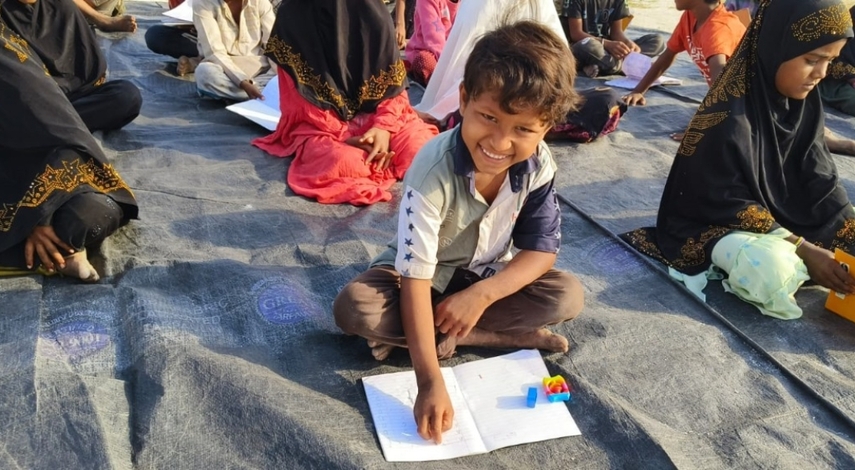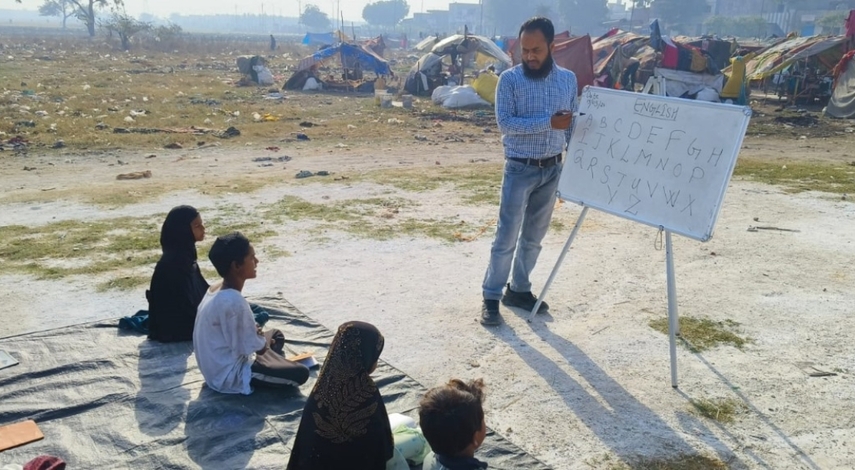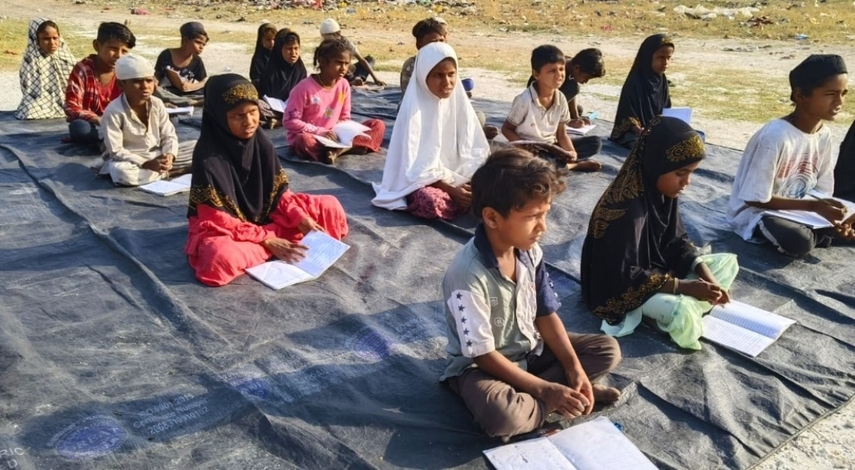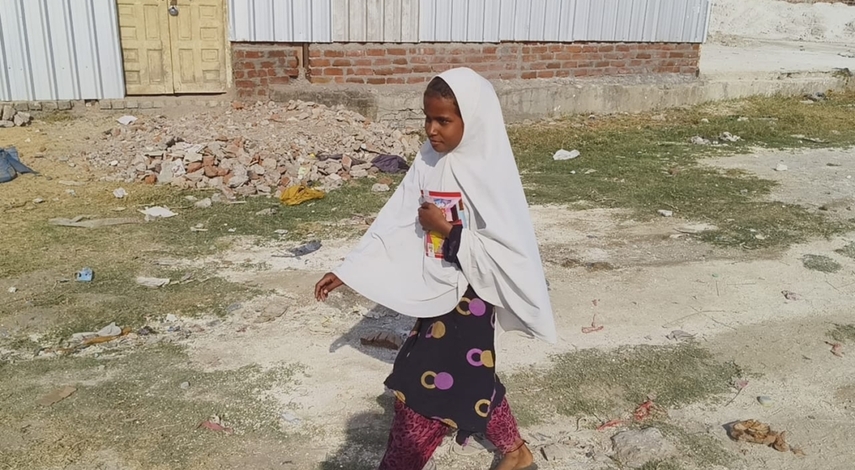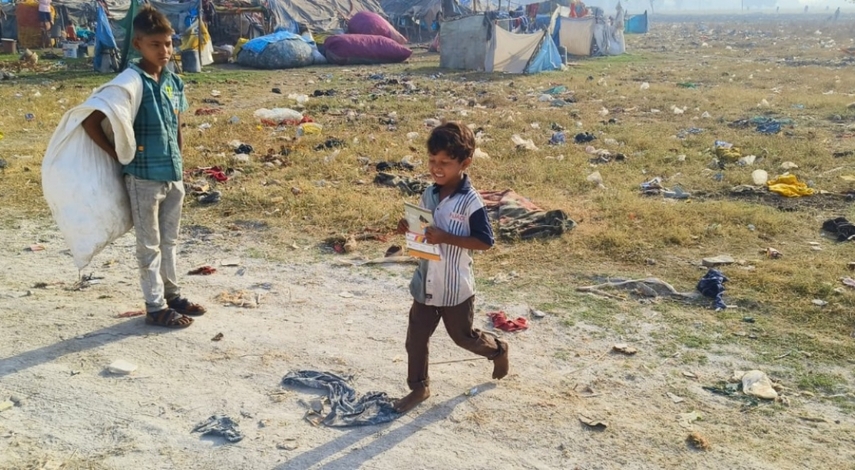Project Background
India is a country that has steep poverty and high illiteracy. As per the 2012 survey, Indian citizens below Poverty line were 276 million. Student dropout of age group 6-13 as Per the SRI survey showed more than 8 million Out of School Children (OOSC). Literacy rate was 74% for Males and around 65% for females. Literacy and dropout of girls being the highest. In some pockets, like Bihar the Literacy rate is worse. There is a high dropout rate of over 20% at the Primary school level.
The districts that we cover include most of these worst pockets of education. We are also dealing with students in the rural areas and from a predominant Minority and Tribal background. We are also attending to Girl's education within this category.
Types of OOSC that will be covered, include:
1) Students not enrolled
Barriers: Poverty; lack of awareness; lack of facilities; need to attend to home chores and overcoming a non-study environment at home
2) Over-aged children
Barriers: Negligence by parents; children's lost interest in studies due to multiple factors like low quality education, accessibility, non-peer pressure, Cultural barriers etc.
3) Dropped-out students
Barriers: overcoming the initial spurt in attendance due to financial incentives offered by Govt. and dropping thereafter; overcoming the need to work during seasonal earning opportunities; income foregone by not working in farm/ assisting parental income; unsustainable educational cost in private schools; Teacher Absenteeism as well as absence of quality education.
Girls drop out on attaining puberty and are discouraged to go to school; insecure environment that discourages parents from sending girls to further their studies; lack of residential facilities and lack of supportive structures.
4) Madrasa and Maktab OOSC
Here OOSC has two division
(a) The regular dropout student who drops out after a short period of learning Urdu/Arabic religious texts and had no exposure to basic modern school subjects
(b) Attending student who is not taught Math, Science or state language as the same does not exist in the Madrasa/Maktab school curriculum. In both cases, students are denied basic primary education. Cultural barriers include preference for religious learning over modern learning and conservative thinking which confines girls to home tasks, prohibits social gender interaction and prefers early marriage of the girl.
Results& Outcomes of Project
· 1,500 students (Girls) that include drop out and those who were denied basic primary quality education.
· 1,000 drop out students (Boys) will be enrolled.
· 1,000 students never enrolled will be enrolled.
· 1,000 students (Makatib & Madaris) who include drop out & those who were denied basic primary quality education.
Activities& Interventions to achieve the results & Outcomes
· Intended outcome would be to enroll students who had never enrolled. A team is composed of the trained teacher, community activist and voluntary helpers. The team will initiate dialogue and friendship with the un-enrolled student and with his/her parents. Education awareness and Child-Rights awareness is explained and a process of winning the child to education is started. Students will be enticed by introducing programs that include play activity, computer learning, group and project based learning etc. This will motivate the students. An atmosphere of un-interrupted learning with a friendly teacher will motivate the student to enroll and study.
· Intended outcome would be the enrollment of old-aged student: The possibility of the old-aged student being a case of “special education" is studied. Teachers trained in teaching special education kids are appointed. Peer learning is encouraged. Regular support, motivation and monitoring is ensured.
· Intended enrolment of dropped-out OOSC: Identification of students from govt., and school records and it's verification on the ground. A combination of innovative and computer learning educational programs, peer learning pressure, community involvement and support as well as continuous counselling will bring students to school. Enticements with small hand-outs (school bags and provision for breakfast) are provided whenever possible. The provision of quality education and steady Teacher attendance restores credibility of the teaching institution. An attitude of friendliness (Teacher Training would include this) and parental involvement in the program, would enable sustenance of the program.
· The community and religious leader's support is mobilized towards identification of dropout students and their enrollment, and for highlighting the importance and awareness of modern education. Basic primary quality modern education is taught through trained teachers who understand religious sensitivities and focus on the teaching of govt. curriculum in regular subjects like Math and Science and Computer Science and English. Peer pressure is introduced as motivation tool besides counseling. Innovative computer based programs and fun learning, rather than disciplinarian learning, brings out student creativity. The student is shown a vision of future growth potential where he/she can join mainstream learning and avail all opportunities that are given to public school students. Maktab student will be provided with audio-visual learning tools and equipment and computer technology.
· Enrolment of Girls. Girls are not the last but deserve to be the first as they are the most underprivileged. We are working on enrolling many day and residential schools that teach only girls. Female teachers are employed as it is seen that they are best able to motivate the girls and their families. Female teachers also understand the parental concerns in respect to girls reaching puberty and the need for their safety. Girls are provided basic modern education which includes computer literacy, English, science, Math, and wherever possible vocational education.
Barriers to education addressed by this results &its activities
· Barriers addressed would be cultural, tribal customs, non-awareness of educational rights, transportation and financial (foregone earnings).
· Barriers overcome could be psychological, infrastructural, and financial and gender based.
· Barriers overcome are financial, psychological, lost interest due to low quality of education and teacher absenteeism, absence of parental support to study, absence of peer pressure etc.
· Barriers overcome would be cultural (preference for religious studies rather than modern studies), financial (parents prefer free boarding which the Madrasa provides); absence of regular learning in the family and non-conducive home atmosphere to regular learning. Timings that do not suit the students are adjusted to their convenience.
· Barriers overcome would be parental objections to sending girls; lack of importance given to girls education; health and hygiene issues; safety of girls; rigid schedule that prohibits them from attending school. Financial barriers are partially overcome through provision of skills training which helps students do part time work and earn.
Monitoring & Evaluation
Monitoring and evaluation of the program is enforced at multi-levels. At the base level, the Teacher uses a Management information System (MIS) built to keep track of the everyday working of the school. This includes student records of attendance, performance and monitoring of progress. It will have markers that show steady progress and highlights points of fluctuation and red flags when the progress is slow, failing or a chance of drop out. A paid community activist who is part of the program, as well as voluntary helpers and village supporters will provide additional information about new conditions that may affect student performance. Intervention is then applied wherein support and counseling is provided to the student and a serious effort made to see that he/she does not drop out. Financial Incentives may be provided in some cases for temporary periods if that is the breaking issue.
At a higher level, the district coordinator will monitor the progress on the district level and reallocate resources (reshuffle or addition of teachers and community activists).
The MIS program will be built by the Lead Agency and it will have many functions. The MIS will be installed in the offices of all the Consortium members. Its accounting application will tab the flow and disbursal of funds, compliance with FCRA rules etc. Compliance with Govt. regulations will become inbuilt in the program. Regular reports will be sent to all stakeholders including the Govt. It will track the installation of computers and other hardware and software and keep the Teachers abreast with new trends of learning.
Teacher training at the district level will include teaching the use of the MIS application.
Sustainability of the project
The project has the community support in-built in its makeup, as it consults the community and seeks its active support. Paid community activist will work hand in glove with the Teacher and will seek cooperation from volunteers in its area of operation. An eco-environment of togetherness, Progress and care will be created. The learning and welfare of the student will be at the heart of the Project. At all times when the student is seen to revert and drop out, intervention measures are taken and effort made to stop it. This will be monitored at the higher level by supervisors who will also work to ensure that there is no dropout after the program starts. The MIS system will monitor the student for 3 years after he/she is mainstreamed and will red flag when signs of dropout are seen. Remedial Intervention measures are affected.
The project is aligned with Govt.’s National & Sate Level Educational Plans.
Indian govt. in pursuance of Sustainable development goals as initiated number of education schemes & mission to improve literacy, effect a reduction in the dropout rate. So these plans include Sarva Shiksha Abhiyan, Right to Education Act and Minorities Educational Empowerment Programs.
The Sarva Shiksha Abhiyan, or SSA, is an Indian Government program aimed at the universalization of elementary education "in a time bound manner".
The Right of Children to Free and Compulsory Education Act or Right to Education Act (RTE), is an Act of the Parliament of India enacted on 4 August 2009, which describes the modalities of the importance of free and compulsory education for children between 6 and 14 in India.
The minorities’ educational empowerment programs run by Ministry of Minority affairs to improve primary & quality education through various schemes like Scholarship, Maulana Azad Fellowship, Padho Pardesh, Nai Udaan etc.
The project will collaborate & coordinate & make convergence as per need with Govt. Educational department & authorizes to ensure the holistic development of children.
Organizational & Management Expertise of JIIU
Jamia Akkalkuwa, located in Dist. Nandurbar of Maharashtra state in India was established in 1979 and is one of the largest Moral & modern educational institutions of India. It is operational in 16 states of India and covers 120 districts. It has various academic branches from Medicine, Engineering, Vocational and Educational teaching to running of Primary and High schools and Madrasas and Makatib. It combines them through a highly organized centralized system that maintains high efficiency. It has completed over a thousand projects in its almost 40 years of working, linking Educational & Community development projects in rural areas and working in cooperation with 10 community-based organizations. This undertaking on an extensive level, qualifies the institution as a Lead agency, as it has the professional acumen and team working capability to undertake the project.

